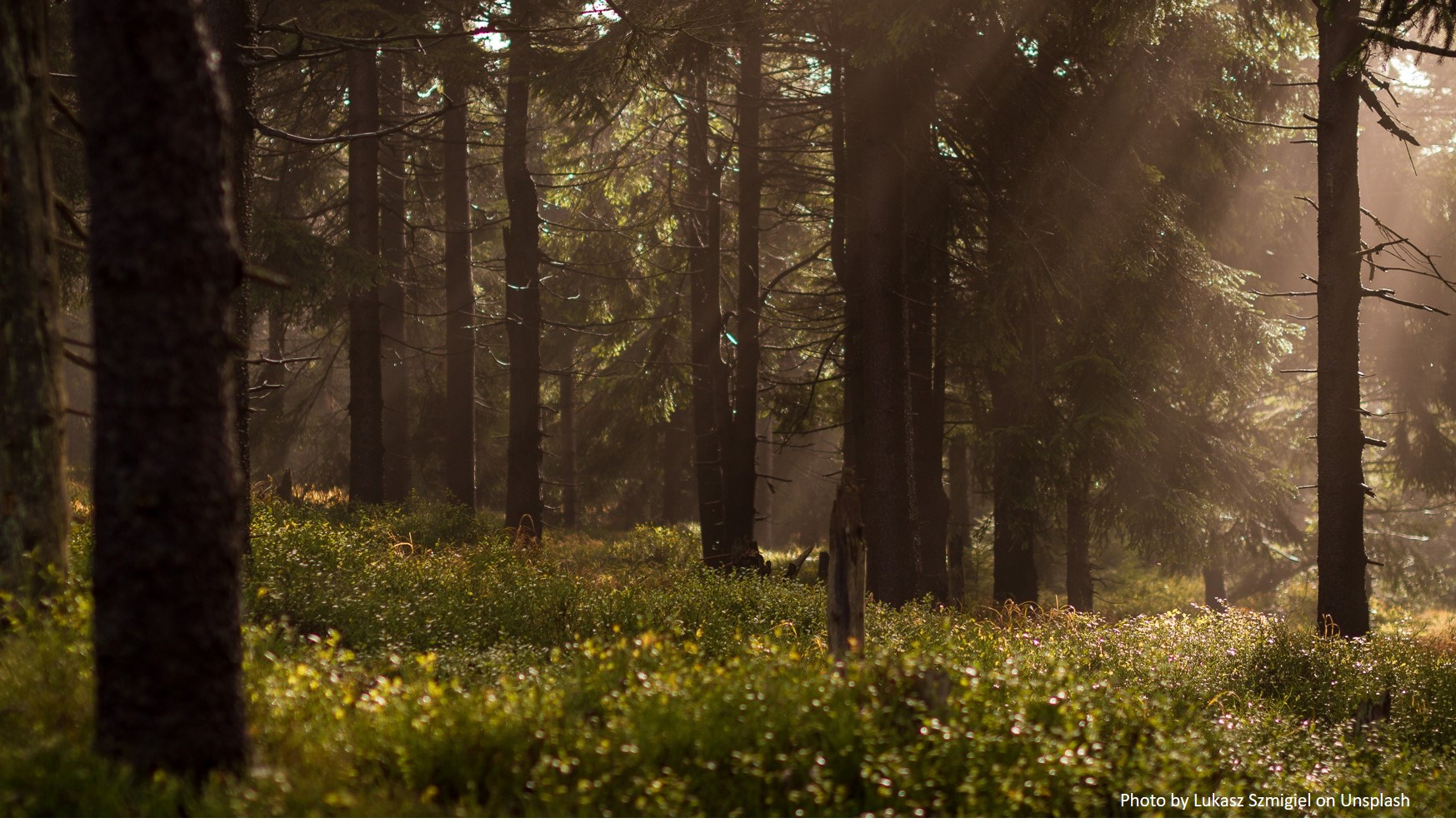<p><em>Editor’s note: News about conservation and the environment is made every day, but some of it can fly under the radar. In a recurring feature, Conservation News shares a recent news story that you should know about.</em></p><p><span style="background-color:initial;font-family:inherit;font-size:inherit;text-align:inherit;text-transform:inherit;white-space:inherit;word-spacing:normal;caret-color:auto;">Over the last half century, droughts and urban expansion have contributed to the destruction and degradation of <a href="https://www.ramsar.org/" target="_blank">35 percent</a> of the world’s wetlands. In fact, these ecosystems — which help regulate Earth’s climate and protect our biodiversity — are disappearing <a href="https://unfccc.int/news/wetlands-disappearing-three-times-faster-than-forests" target="_blank">three times faster</a> than forests. </span></p><p><span style="background-color:initial;font-family:inherit;font-size:inherit;text-align:inherit;text-transform:inherit;white-space:inherit;word-spacing:normal;caret-color:auto;"></span><span style="background-color:initial;font-family:inherit;font-size:inherit;text-align:inherit;text-transform:inherit;white-space:inherit;word-spacing:normal;caret-color:auto;">How might we stymie this decline? Introducing beavers back into their natural habitats is a good start, <a href="https://twitter.com/NavinSinghKhadk" target="_blank">Navin Singh Khadka reports for the BBC</a>.</span></p><p><span style="background-color:initial;font-family:inherit;font-size:inherit;text-align:inherit;text-transform:inherit;white-space:inherit;word-spacing:normal;caret-color:auto;"></span><span style="background-color:initial;font-family:inherit;font-size:inherit;text-align:inherit;text-transform:inherit;white-space:inherit;word-spacing:normal;caret-color:auto;">Once hunted to near extinction for their fur, beavers have been reintroduced to parts of North America and northern Europe in more than 100 successful programs — giving scientists a view into their role as <a href="https://www.ncbi.nlm.nih.gov/pmc/articles/PMC7883483/" target="_blank">ecosystem engineers</a>. </span></p><p><span style="background-color:initial;font-family:inherit;font-size:inherit;text-align:inherit;text-transform:inherit;white-space:inherit;word-spacing:normal;caret-color:auto;"></span><span style="background-color:initial;font-family:inherit;font-size:inherit;text-align:inherit;text-transform:inherit;white-space:inherit;word-spacing:normal;caret-color:auto;">"Basically, beavers excel at creating complex wetland habitats that we’d never match,” Nigel Willby, professor of freshwater science at University of Stirling, told the BBC. </span></p><p><span style="background-color:initial;font-family:inherit;font-size:inherit;text-align:inherit;text-transform:inherit;white-space:inherit;word-spacing:normal;caret-color:auto;"></span><span style="background-color:initial;font-family:inherit;font-size:inherit;text-align:inherit;text-transform:inherit;white-space:inherit;word-spacing:normal;caret-color:auto;">"Anyone can make a pond, but beavers make amazingly good ponds for biodiversity, partly because they are shallow, littered with dead wood and generally messed about with by beavers feeding on plants, digging canals, repairing dams, building lodges, etc.,” he added.</span></p><p><span style="background-color:initial;font-family:inherit;font-size:inherit;text-align:inherit;text-transform:inherit;white-space:inherit;word-spacing:normal;caret-color:auto;"></span><span style="background-color:initial;font-family:inherit;font-size:inherit;text-align:inherit;text-transform:inherit;white-space:inherit;word-spacing:normal;caret-color:auto;">The shallow ponds created by Beaver dams can contain nearly twice as many mammal species as other ponds, according to a <a href="https://link.springer.com/article/10.1007/s10530-019-01919-9" target="_blank">2018</a> study. Beavers can even help protect wetlands.</span></p><p><span style="background-color:initial;font-family:inherit;font-size:inherit;text-align:inherit;text-transform:inherit;white-space:inherit;word-spacing:normal;caret-color:auto;"></span><span style="background-color:initial;font-family:inherit;font-size:inherit;text-align:inherit;text-transform:inherit;white-space:inherit;word-spacing:normal;caret-color:auto;">Emily Fairfax, an ecohydrologist at California State University, studied 10 different wildfires in the United States between 2000 and 2021. In each case, she found beavers and their ecosystem engineering created and preserved wetlands — even through megafires and serious drought — by slowing the flow of water and holding it in the landscape longer.</span></p><p><span style="background-color:initial;font-family:inherit;font-size:inherit;text-align:inherit;text-transform:inherit;white-space:inherit;word-spacing:normal;caret-color:auto;"></span><span style="background-color:initial;font-family:inherit;font-size:inherit;text-align:inherit;text-transform:inherit;white-space:inherit;word-spacing:normal;caret-color:auto;">"This transforms simple streams into thriving wetland ecosystems," Fairfax told the BBC.</span></p><p><span style="background-color:initial;font-family:inherit;font-size:inherit;text-align:inherit;text-transform:inherit;white-space:inherit;word-spacing:normal;caret-color:auto;"></span><span style="background-color:initial;font-family:inherit;font-size:inherit;text-align:inherit;text-transform:inherit;white-space:inherit;word-spacing:normal;caret-color:auto;">And thriving wetlands stash away climate-heating carbon. For example, peatlands, a type of wetland ecosystem made up of decaying waterlogged plants, store massive amounts of “<a href="https://www.conservation.org/projects/irrecoverable-carbon">irrecoverable carbon</a>” — that is, carbon that, if emitted into the atmosphere, could not be restored by 2050. </span></p><p><span style="background-color:initial;font-family:inherit;font-size:inherit;text-align:inherit;text-transform:inherit;white-space:inherit;word-spacing:normal;caret-color:auto;"></span><span style="background-color:initial;font-family:inherit;font-size:inherit;text-align:inherit;text-transform:inherit;white-space:inherit;word-spacing:normal;caret-color:auto;">A Conservation International <a href="https://www.nature.com/articles/s41893-021-00803-6" target="_blank">study</a> mapped the world’s irrecoverable carbon and found that around the world peatlands have locked away more than 39 billion metric tons of irrecoverable carbon. </span></p><p><span style="background-color:initial;font-family:inherit;font-size:inherit;text-align:inherit;text-transform:inherit;white-space:inherit;word-spacing:normal;caret-color:auto;"></span><span style="background-color:initial;font-family:inherit;font-size:inherit;text-align:inherit;text-transform:inherit;white-space:inherit;word-spacing:normal;caret-color:auto;">As evidence of wetlands’ underappreciated role in storing carbon mounts, finding new ways to restore these ecosystems is fundamental. The beaver might just help.</span></p><p><span style="background-color:initial;font-family:inherit;font-size:inherit;text-align:inherit;text-transform:inherit;white-space:inherit;word-spacing:normal;caret-color:auto;"></span><span style="background-color:initial;font-family:inherit;font-size:inherit;text-align:inherit;text-transform:inherit;white-space:inherit;word-spacing:normal;caret-color:auto;">Read the full story <a href="https://www.bbc.com/news/science-environment-64502365" target="_blank">here</a>.</span></p><p><span style="background-color:initial;font-family:inherit;font-size:inherit;text-align:inherit;text-transform:inherit;white-space:inherit;word-spacing:normal;caret-color:auto;"></span><span style="background-color:initial;font-family:inherit;font-size:inherit;text-align:inherit;text-transform:inherit;white-space:inherit;word-spacing:normal;caret-color:auto;">Further reading:</span></p><ul><li><span style="background-color:initial;font-family:inherit;font-size:inherit;text-align:inherit;text-transform:inherit;white-space:inherit;word-spacing:normal;caret-color:auto;"></span><span style="background-color:initial;font-family:inherit;font-size:inherit;text-align:inherit;text-transform:inherit;white-space:inherit;word-spacing:normal;caret-color:auto;"><a href="https://www.conservation.org/blog/5-things-you-should-know-about-wetlands">5 things you should know about wetlands</a></span></li><li><span style="background-color:initial;font-family:inherit;font-size:inherit;text-align:inherit;text-transform:inherit;white-space:inherit;word-spacing:normal;caret-color:auto;"></span><span style="background-color:initial;font-family:inherit;font-size:inherit;text-align:inherit;text-transform:inherit;white-space:inherit;word-spacing:normal;caret-color:auto;"><a href="https://www.conservation.org/blog/these-ecosystems-could-determine-our-climate-future-study">These ecosystems could determine our climate future: study</a></span></li><li><span style="background-color:initial;font-family:inherit;font-size:inherit;text-align:inherit;text-transform:inherit;white-space:inherit;word-spacing:normal;caret-color:auto;"></span><span style="background-color:initial;font-family:inherit;font-size:inherit;text-align:inherit;text-transform:inherit;white-space:inherit;word-spacing:normal;caret-color:auto;"><a href="https://www.conservation.org/blog/in-china-engineered-wetlands-remove-waste-from-fresh-water">In China, engineered wetlands remove waste from fresh water</a></span></li></ul><div><em>Max Marcovich is a staff writer at Conservation International. Want to read more stories like this? <a href="https://www.conservation.org/act/subscribe">Sign up for email updates</a>. Also, <a href="https://www.conservation.org/act">please consider supporting our critical work</a>.</em></div>

